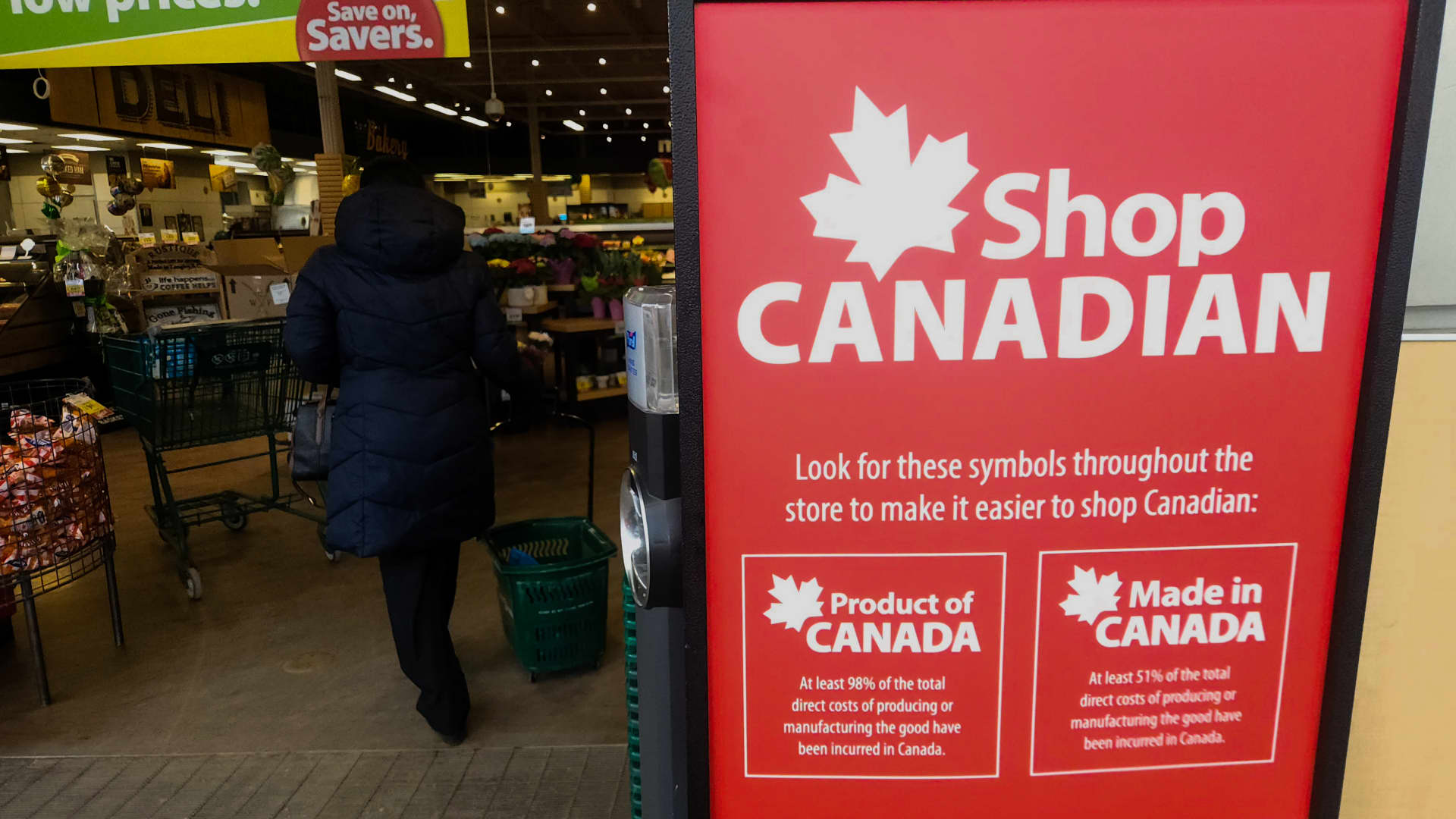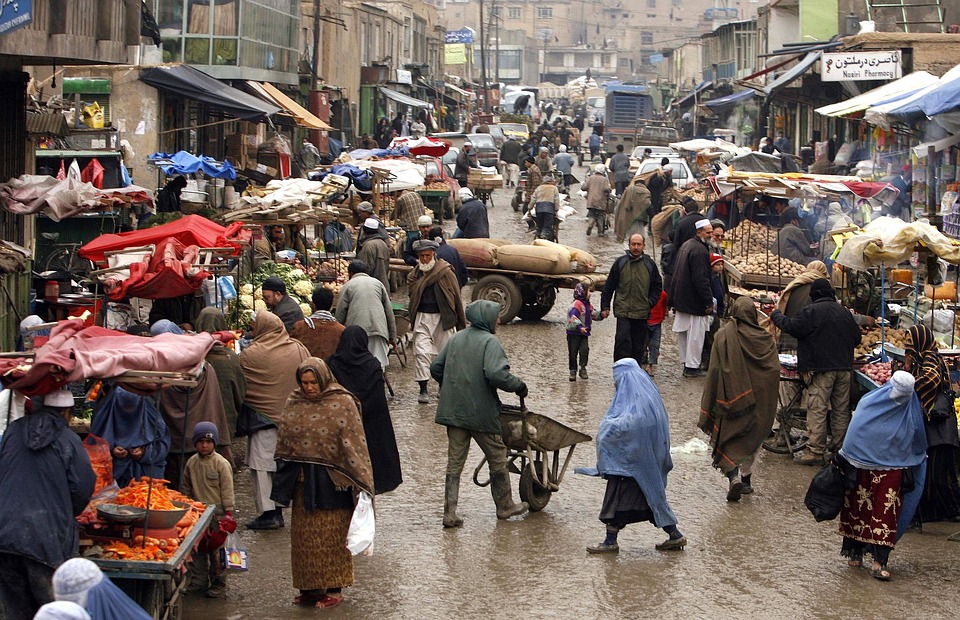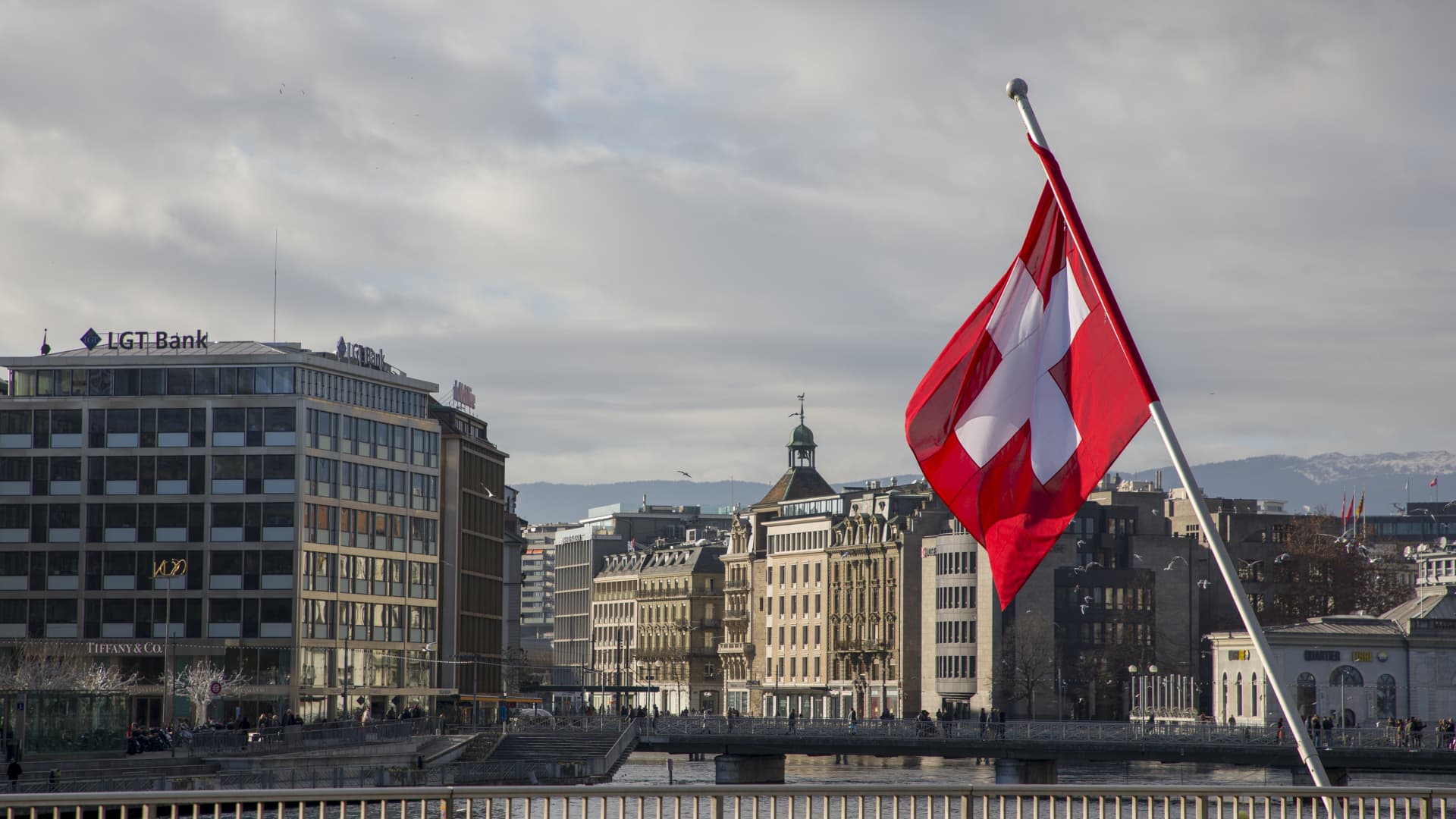Global Trends and Politics
The Role of HR in Supporting Employee Activism: A Guide

The modern workplace is witnessing a significant shift, with employees become increasingly vocal about their rights, values, and beliefs. Employee activism, a term that refers to the collective action taken by employees to bring about change within an organization or industry, is on the rise. As a result, Human Resources (HR) professionals are facing new challenges and opportunities to support their employees’ activism while ensuring the organization’s success. In this guide, we will explore the role of HR in supporting employee activism, the benefits, and the challenges that come with it.
What is Employee Activism?
Employee activism is not a new concept, but its scope and intensity have increased significantly in recent years. It can manifest in various forms, such as:
- Unionization: Employees coming together to form a union to negotiate better working conditions, wages, and benefits
- Social and environmental activism: Employees using their collective voice to advocate for social and environmental causes
- Internal activism: Employees pushing for changes within the organization, such as better working hours, flexible work arrangements, or improved diversity and inclusion
The Role of HR in Supporting Employee Activism
HR professionals play a crucial role in supporting employee activism by:
Providing a Supportive Environment
- Encouraging open communication and transparency within the organization
- Fostering a culture of inclusivity and respect for diverse perspectives
- Providing resources and training to support employee engagement and activism
Managing Expectations
- Setting clear expectations for employee activism, ensuring that it aligns with the organization’s goals and values
- Establishing procedures for reporting and addressing concerns or issues raised by employees
- Ensuring that employee activism does not interfere with the organization’s operations or compromise its reputation
Facilitating Collaboration and Negotiation
- Facilitating communication and collaboration between employees, management, and other stakeholders
- Assisting in negotiations and conflict resolution
- Providing guidance on labor laws and regulations related to employee activism
Monitoring and Evaluating
- Monitoring the impact of employee activism on the organization
- Evaluating the effectiveness of employee activism initiatives
- Identifying areas for improvement and adjusting strategies accordingly
Benefits of Supporting Employee Activism
Supporting employee activism can bring numerous benefits to the organization, including:
- Improved employee engagement and morale
- Increased creativity and innovation
- Enhanced reputation and brand image
- Better representation and inclusion of diverse perspectives
Challenges of Supporting Employee Activism
However, supporting employee activism also comes with challenges, including:
- Balancing the rights of employees with the needs of the organization
- Managing conflicting opinions and perspectives
- Ensuring that employee activism does not compromise the organization’s operations or reputation
- Navigating complex labor laws and regulations
Real-Life Examples and Success Stories
- The #MeToo movement, which led to a global conversation about workplace harassment and accountability
- The Black Lives Matter movement, which highlighted systemic racism and police brutality
- The environmental activism of employees at companies like Amazon and Google, which led to changes in company policies and practices
Conclusion
In conclusion, the role of HR in supporting employee activism is critical to creating a positive and productive work environment. By providing a supportive environment, managing expectations, facilitating collaboration and negotiation, and monitoring and evaluating employee activism, HR professionals can help organizations reap the benefits of employee activism while minimizing its challenges. As the world continues to evolve, it is essential for HR professionals to stay ahead of the curve and adapt to the changing landscape of employee activism.
FAQs
Q: What is the primary goal of HR in supporting employee activism?
A: The primary goal of HR is to support employees in their activism while ensuring that it aligns with the organization’s goals and values.
Q: How can HR professionals facilitate collaboration and negotiation between employees and management?
A: HR professionals can facilitate communication and collaboration by providing a neutral and confidential forum for discussion, establishing clear expectations, and offering guidance on labor laws and regulations.
Q: What are some common challenges that HR professionals face in supporting employee activism?
A: Common challenges include balancing the rights of employees with the needs of the organization, managing conflicting opinions and perspectives, and ensuring that employee activism does not compromise the organization’s operations or reputation.
Q: How can HR professionals evaluate the effectiveness of employee activism initiatives?
A: HR professionals can evaluate the effectiveness of employee activism initiatives by monitoring the impact on employee engagement and morale, identifying areas for improvement, and adjusting strategies accordingly.
Global Trends and Politics
Trump’s Tariffs Hit Canadian Small Businesses Hard

Introduction to Trade Tensions
Just across the U.S.-Canada border, some small businesses are taking tariffs personally. President Donald Trump has said his wide-sweeping tariffs, even on some of the country’s closest trade partners, will rebalance international trade and bring manufacturing back stateside. But for the U.S.’s northern neighbors, tariffs may mean an erosion of trust.
Historical Trade Relationship
The country’s trade relationship with Canada has historically been integral to both national economies. In 2024, the trade of goods between both nations totaled $762.1 billion. According to the Office of the United States Trade Representative, Canada exported over three-quarters of its goods to the U.S. last year, and U.S. imports accounted for almost half of all goods it brought in.
Tariffs and Retaliation
Starting in March, however, the Trump administration implemented a 10% tariff on Canadian energy and 25% tariffs on other imports from Canada and Mexico, a levy he’d promised on Inauguration Day. But he exempted many imports covered under the United States-Mexico-Canada agreement. Trump also put a 25% tariff on vehicles not assembled in the U.S. that took effect earlier this month, a move that affects both Mexico and Canada, two major auto production hubs. In addition, a 25% tariff on auto parts is set to take effect next month. Canada has responded with its own retaliatory tariffs, but national pride has sparked another kind of resistance.
Canadian Resistance
Balzac’s Coffee Roasters, a chain of cafes across Ontario and Toronto, has responded to trade tensions with a renamed menu item: the Americano — a commonplace espresso drink — is now a maple leaf-marked "Canadiano." Your Independent Grocers, a chain of independently owned supermarkets under the Canadian-traded Loblaw Companies, uses its own maple leaf badge to indicate products "prepared in Canada." The grocer also indicates tariff-impacted items with a "T" logo in stores and online.
Impact on Small Businesses
Corinne Pohlmann is the executive vice president of advocacy at the Canadian Federation of Independent Business, of CFIB, which represents over 100,000 small businesses across 12 of Canada’s 13 territories and provinces. About half of CFIB members are directly involved in either importing or exporting from the U.S., according to the organization’s December 2024 survey. That metric does not include reliance on suppliers and customers who are also trading with the U.S. More than a quarter of CFIB members surveyed in late March reported seeing stronger demand for Canadian-owned products. More than half of the surveyed businesses agreed that the U.S. is not a reliable trading partner.
Emotional Distress and Eroded Trust
The trade tensions have extended to some long-standing relationships between U.S. and Canadian small businesses, she said, as entrepreneurs decide which side of the border will absorb the costs of new tariffs. Pohlmann recalled some CFIB members asking for guidance on how to renegotiate contracts with partners to the south. Pohlmann said the tariffs are causing emotional distress, in addition to cost increases. "For a lot of Canadians, it felt like a betrayal," Pohlmann said.
Conclusion
The tariffs imposed by the U.S. on Canada have caused significant distress and eroded trust among Canadian businesses. Even if President Trump lessens tariffs, Canadian businesses may be hesitant to rebuild trading relationships with U.S. partners. CFIB’s Pohlmann pointed to lost contracts and eroded trust. "While we’d welcome a permanent reprieve from tariffs, the trading relationship between Canada and the United States has been fractured and may never be the same again," Pohlmann said.
FAQs
Q: What is the current trade relationship between the U.S. and Canada?
A: The trade relationship between the U.S. and Canada has historically been integral to both national economies, with Canada exporting over three-quarters of its goods to the U.S. and U.S. imports accounting for almost half of all goods it brought in.
Q: What tariffs has the U.S. imposed on Canada?
A: The U.S. has imposed a 10% tariff on Canadian energy and 25% tariffs on other imports from Canada and Mexico, as well as a 25% tariff on vehicles not assembled in the U.S.
Q: How have Canadian businesses responded to the tariffs?
A: Canadian businesses have responded with a mix of resistance and retaliation, including renaming menu items, using maple leaf badges to indicate products "prepared in Canada," and indicating tariff-impacted items with a "T" logo.
Q: What is the impact of the tariffs on small businesses in Canada?
A: The tariffs have caused significant distress and eroded trust among Canadian businesses, with many reporting lost contracts and increased costs.
Q: Will the trade relationship between the U.S. and Canada ever be the same again?
A: According to CFIB’s Pohlmann, the trading relationship between Canada and the United States has been fractured and may never be the same again, even if President Trump lessens tariffs.
Global Trends and Politics
From Manager to Mediator: How to Handle Political Disputes at Work

Political impacts on workplaces can be detrimental, causing tension and conflict among employees. In today’s globalized and interconnected world, political discussions are inevitable, and managers must be equipped to handle disputes that may arise. As a manager, it’s essential to navigate these sensitive issues to maintain a productive and respectful work environment.
Understanding the Impact of Politics on the Workplace
The 2016 US presidential election highlighted the depth of political divisions in the country, and workplaces were not immune to these tensions. A survey by the Society for Human Resource Management found that 26% of employees reported feeling uncomfortable discussing politics at work, while 22% reported witnessing political disagreements between coworkers. This discomfort can lead to decreased productivity, increased stress, and even employee turnover.
Causes of Political Disputes at Work
Several factors contribute to the emergence of political disputes at work, including differences in personal values, cultural backgrounds, and socioeconomic status. The rise of social media has also made it easier for employees to share their opinions and engage in online discussions, which can sometimes spill over into the workplace. For instance, during the 2020 US presidential election, a survey found that 60% of employees reported discussing politics on social media, with 21% reporting that these discussions had a negative impact on their work relationships.
Strategies for Managing Political Disputes
To effectively manage political disputes, managers must adopt a neutral and respectful approach. This involves creating a safe and inclusive work environment where employees feel comfortable sharing their opinions without fear of retribution or judgment. One strategy is to establish clear guidelines for workplace discussions, emphasizing respect and civility. For example, a company like Google has a policy of encouraging open and respectful discussions, while also providing guidelines for employees to follow when engaging in online discussions.
Encouraging Respectful Dialogue
Encouraging respectful dialogue is crucial in managing political disputes at work. Managers can achieve this by modeling respectful behavior themselves and promoting active listening among employees. This involves creating opportunities for employees to engage in constructive discussions, such as town hall meetings or small group discussions. A study by the Harvard Business Review found that employees who felt heard and understood by their managers were more likely to feel engaged and motivated at work.
Mediation Techniques for Resolving Conflicts
When conflicts do arise, managers must be equipped with effective mediation techniques to resolve them. This involves remaining neutral, listening actively, and focusing on finding common ground. One technique is to use open-ended questions to encourage employees to share their perspectives and concerns. For instance, a manager at a company like Facebook might ask employees to share their thoughts on a particular issue, and then work together to find a solution that respects everyone’s opinions.
Addressing Power Imbalances
Power imbalances can exacerbate political disputes at work, particularly when managers or supervisors hold different views than their employees. To address these imbalances, managers must be aware of their own biases and take steps to create a level playing field. This involves being transparent about their own views and creating opportunities for employees to share their perspectives without fear of retribution. A study by the Journal of Applied Psychology found that employees who felt that their managers were fair and transparent were more likely to trust them and feel engaged at work.
Creating a Culture of Inclusion and Respect
Creating a culture of inclusion and respect is essential in managing political disputes at work. This involves promoting diversity and inclusion initiatives, such as diversity training programs and employee resource groups. For example, a company like Microsoft has a diversity and inclusion program that includes training programs, mentorship opportunities, and employee resource groups. These initiatives can help create a sense of community and shared values among employees, reducing the likelihood of conflict and improving overall well-being.
Leading by Example
Managers must lead by example in promoting a culture of inclusion and respect. This involves modeling respectful behavior, being open to feedback, and creating opportunities for employees to share their perspectives. A study by the Journal of Leadership and Organizational Studies found that managers who modeled respectful behavior were more likely to have employees who felt engaged and motivated at work.
Conclusion
In conclusion, managing political disputes at work requires a nuanced and multifaceted approach. By understanding the impact of politics on the workplace, adopting strategies for managing disputes, and creating a culture of inclusion and respect, managers can reduce conflict and promote a positive work environment. By leading by example and promoting respectful dialogue, managers can create a workplace where employees feel heard, valued, and respected, regardless of their political views.
Frequently Asked Questions
Q: How can I create a safe and inclusive work environment for employees with different political views?
A: Creating a safe and inclusive work environment involves establishing clear guidelines for workplace discussions, promoting respectful dialogue, and addressing power imbalances. Managers can also create opportunities for employees to engage in constructive discussions and provide training programs on diversity and inclusion.
Q: What are some effective mediation techniques for resolving conflicts at work?
A: Effective mediation techniques include remaining neutral, listening actively, and focusing on finding common ground. Managers can use open-ended questions to encourage employees to share their perspectives and concerns, and work together to find a solution that respects everyone’s opinions.
Q: How can I promote a culture of inclusion and respect at work?
A: Promoting a culture of inclusion and respect involves creating diversity and inclusion initiatives, such as diversity training programs and employee resource groups. Managers can also lead by example, model respectful behavior, and create opportunities for employees to share their perspectives and feedback.
Q: What are the consequences of not addressing political disputes at work?
A: Not addressing political disputes at work can lead to decreased productivity, increased stress, and employee turnover. It can also create a toxic work environment, damaging relationships among employees and undermining trust in management.
Q: How can I balance my own political views with the need to remain neutral as a manager?
A: Balancing your own political views with the need to remain neutral as a manager involves being aware of your own biases and taking steps to create a level playing field. Managers can be transparent about their own views, while also creating opportunities for employees to share their perspectives without fear of retribution.
Global Trends and Politics
Wealthy Americans Flock to Swiss Banks Amid US Uncertainty

Introduction to De-Americanization of Portfolios
A growing number of wealthy Americans are opening bank accounts in Switzerland as part of the "de-Americanization" of their portfolios, according to investors and banks. Swiss banks say they have seen a surge of interest and business from high-net-worth Americans opening investment accounts in recent months.
Reasons Behind the Trend
"It comes in waves," said Pierre Gabris, CEO of Alpen Partners International, a Swiss financial consulting firm. "When [former President Barack Obama] was elected we saw a big wave. Then Covid was another wave. Now tariffs are causing a new wave." Gabris said different clients have different motivations for opening an account. Many want to diversify away from the dollar, which they believe will weaken even further under the weight of the soaring U.S. debt. Switzerland’s neutral politics, stable economy, strong currency and reliable legal system are all a draw.
Motivations for Opening Swiss Accounts
Others are motivated by politics and what they see as a decline in the rule of law in the U.S. under the Trump administration. Others still are opening Swiss accounts to buy physical gold in Switzerland, which is famous for its gold storage and refineries. Gabris said many are also looking for residency or second citizenships in Europe and want to buy property. "It’s a plan B," he said.
Process of Opening a Swiss Bank Account
Opening a Swiss bank account is fairly straightforward but has to comply with strict U.S. disclosure laws. While the major U.S. banks can’t open Swiss accounts for clients, most have referral relationships with a handful of Swiss companies that are registered with the SEC and are allowed to accept U.S. investors. Vontobel SFA, believed to be the largest Swiss bank registered with the SEC for U.S. clients, declined to comment. The Swiss private bank Pictet said it had seen a "significant uptick" in requests from clients at its Swiss-based entity Pictet North America Advisors, which is registered with the SEC.
Regulation and Transparency
While opening a Swiss bank account decades ago may have carried a trace of illicit tax evasion, today it’s highly regulated and more widespread, complete with tax forms and reporting. "Many Americans are realizing that 100% of their portfolio is in U.S. dollars so they’re thinking, ‘Maybe I should diversify," Gabris said.
Conclusion
The trend of wealthy Americans opening bank accounts in Switzerland as part of the "de-Americanization" of their portfolios is driven by various factors, including diversification, political instability, and economic uncertainty. As the global economic landscape continues to evolve, it is likely that this trend will persist, with more high-net-worth individuals seeking to diversify their assets and secure their financial futures.
FAQs
Q: Why are wealthy Americans opening bank accounts in Switzerland?
A: Wealthy Americans are opening bank accounts in Switzerland to diversify their portfolios, escape political instability, and take advantage of Switzerland’s stable economy and strong currency.
Q: Is it legal for Americans to open a Swiss bank account?
A: Yes, it is legal for Americans to open a Swiss bank account, but it must comply with strict U.S. disclosure laws.
Q: What are the benefits of opening a Swiss bank account?
A: The benefits of opening a Swiss bank account include diversification, access to a stable economy and strong currency, and the ability to buy physical gold in Switzerland.
Q: How do I open a Swiss bank account?
A: To open a Swiss bank account, you can work with a Swiss company that is registered with the SEC and allowed to accept U.S. investors, or use a referral relationship with a major U.S. bank.
Q: Is opening a Swiss bank account a sign of tax evasion?
A: No, opening a Swiss bank account is not necessarily a sign of tax evasion. Today, it is a highly regulated and transparent process, complete with tax forms and reporting.
-

 Career Advice4 months ago
Career Advice4 months agoInterview with Dr. Kristy K. Taylor, WORxK Global News Magazine Founder
-

 Diversity and Inclusion (DEIA)4 months ago
Diversity and Inclusion (DEIA)4 months agoSarah Herrlinger Talks AirPods Pro Hearing Aid
-

 Career Advice4 months ago
Career Advice4 months agoNetWork Your Way to Success: Top Tips for Maximizing Your Professional Network
-

 Changemaker Interviews3 months ago
Changemaker Interviews3 months agoUnlocking Human Potential: Kim Groshek’s Journey to Transforming Leadership and Stress Resilience
-

 Diversity and Inclusion (DEIA)4 months ago
Diversity and Inclusion (DEIA)4 months agoThe Power of Belonging: Why Feeling Accepted Matters in the Workplace
-

 Global Trends and Politics4 months ago
Global Trends and Politics4 months agoHealth-care stocks fall after Warren PBM bill, Brian Thompson shooting
-

 Global Trends and Politics4 months ago
Global Trends and Politics4 months agoUnionization Goes Mainstream: How the Changing Workforce is Driving Demand for Collective Bargaining
-

 Training and Development4 months ago
Training and Development4 months agoLevel Up: How Upskilling Can Help You Stay Ahead of the Curve in a Rapidly Changing Industry








